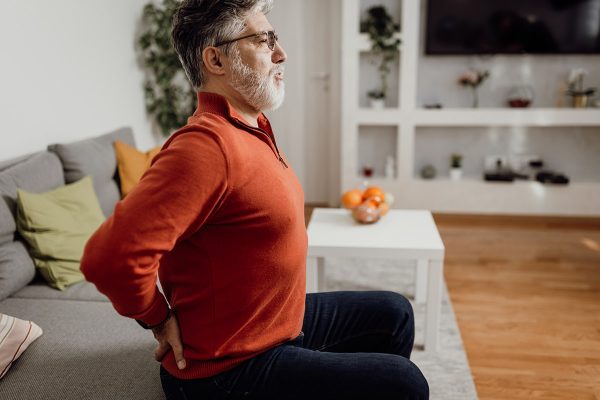
Lumbar stenosis is a condition characterized by the narrowing of the spinal canal in the lower back, which can lead to compression of the nerves traveling through the lower spine. This compression often results in symptoms such as pain, numbness, tingling, and muscle weakness, particularly in the legs. The severity and impact of these symptoms can significantly affect a person’s quality of life, making lumbar stenosis a challenging condition to manage and heal.
Understanding Lumbar Stenosis
The spine is a complex structure composed of vertebrae, intervertebral discs, ligaments, and spinal nerves. Over time, wear and tear, injuries, or degenerative changes can cause the spinal canal to narrow. This narrowing can be due to various factors such as:
1. Herniated Discs: When the soft material inside a disc pushes out and compresses the nerves.
2. Bone Spurs: Overgrowth of bone that can narrow the space in the spine.
3. Thickened Ligaments: Ligaments can thicken and calcify over time, leading to reduced space in the spinal canal.
4. Spinal Injuries: Traumas or injuries can lead to inflammation and structural changes.
These factors collectively contribute to the complexity of lumbar stenosis, making it a condition that often requires multifaceted approaches for effective management and healing.
Why Is Healing Lumbar Stenosis Challenging?
1. Chronic Nature: Lumbar stenosis often develops gradually over years. The chronic nature of this condition means that by the time symptoms are severe enough to seek medical help, significant structural changes have already occurred, therefore it is hard for lumbar stenosis to heal naturally.
2. Degenerative Changes: Since lumbar stenosis is frequently related to age-related degenerative changes, the natural aging process continues to contribute to the condition even as treatment is ongoing.
3. Complex Anatomy: The spine’s anatomy is intricate, involving bones, discs, ligaments, and nerves. Addressing the compression without affecting other structures is challenging.
4. Varied Symptoms: Symptoms can vary widely among individuals, from mild discomfort to debilitating pain and weakness, making standardized treatment difficult.
5. Limited Regeneration: Unlike some tissues in the body, spinal structures have limited regenerative capabilities, meaning damage repair is slow and often incomplete.
6. Physical Activity Limitations: Pain and discomfort from lumbar stenosis can limit physical activity, which is crucial for overall health and can impede the healing process.
How CARESPACE Can Help
At CARESPACE, we understand the complexities and challenges associated with lumbar stenosis. Our client-focused, multidisciplinary approach aims to provide comprehensive care tailored to each individual’s needs. Our team of practitioners, including chiropractors, physiotherapists, and other health professionals, work collaboratively to create and deliver personalized care plans designed to address the root causes and provide effective, long-lasting relief. This provides many treatment options for lumbar stenosis to make sure you get the care you need.
The Role of Physiotherapists
Kitchener Waterloo physiotherapists at CARESPACE play a crucial role in managing lumbar stenosis by focusing on improving mobility, strength, and function. Here’s how they contribute:
1. Exercise: Specific exercises are designed to strengthen the muscles supporting the spine, improve flexibility, and reduce pressure on the spinal canal. Core strengthening exercises, in particular, help stabilize the spine and reduce symptoms.
2. Manual Treatment: Techniques such as spinal mobilization and manipulation can help relieve pain and improve spinal function. These hands-on treatments aim to increase the range of motion and reduce nerve compression.
3. Education and Ergonomics: Physiotherapists educate clients on posture, body mechanics, and ergonomics to prevent further strain on the spine. They provide guidance on daily activities and exercises that can be done at home.
4. Pain Management: Various modalities, including heat/cold therapy, ultrasound, and electrical stimulation, are used to manage pain and inflammation.
The Role of Chiropractors
Chiropractic care is another integral component of the multidisciplinary approach at CARESPACE. Chiropractors specialize in diagnosing and treating musculoskeletal disorders, particularly those involving the spine, they can also provide you with a fast recovery from lumbar stenosis to help get you back on track. Their role includes:
1. Spinal Adjustments: Chiropractors use controlled, sudden force to improve spinal motion and physical function. These adjustments can help reduce nerve irritability and improve symptoms.
2. Decompression Techniques: Techniques such as spinal decompression therapy can help relieve pressure on the spinal nerves by gently stretching the spine, increasing the space within the spinal canal.
3. Holistic Approach: Chiropractors consider the overall health of the client, addressing lifestyle factors that may contribute to lumbar stenosis, such as weight management, nutrition, and physical activity.
4. Collaboration with Other Practitioners: At CARESPACE, chiropractors work closely with physiotherapists and other health professionals to ensure a coordinated and comprehensive treatment plan.
The Synergy of Multidisciplinary Care
The coordinated care approach at CARESPACE ensures that clients receive a holistic treatment plan that addresses all aspects of lumbar stenosis. By combining the expertise of physiotherapists and chiropractors, along with other practitioners, we can offer:
- Comprehensive Assessments: Detailed evaluations to understand the extent of the condition and its impact on the client’s life.
- Personalized Treatment Plans: Customized plans that incorporate various therapies and interventions tailored to the client’s needs.
- Collaborative Care: Regular communication and collaboration among practitioners to adjust treatments as needed and ensure the best possible outcomes.
- Long-term Management: Strategies for ongoing management and prevention of future issues, including lifestyle modifications and continued physiotherapy.
Lumbar stenosis is a complex and challenging condition to heal due to its chronic nature, degenerative origins, and the intricate anatomy of the spine. However, with a comprehensive, multidisciplinary approach like the one offered at CARESPACE, clients can find effective relief and improved quality of life. Our team of physiotherapists, chiropractors, and other health professionals work together to provide personalized, evidence-based care that addresses the root causes of lumbar stenosis and supports long-term health and wellness. If you or someone you know is struggling with lumbar stenosis, consider reaching out to CARESPACE to learn how our coordinated care can make a difference.




